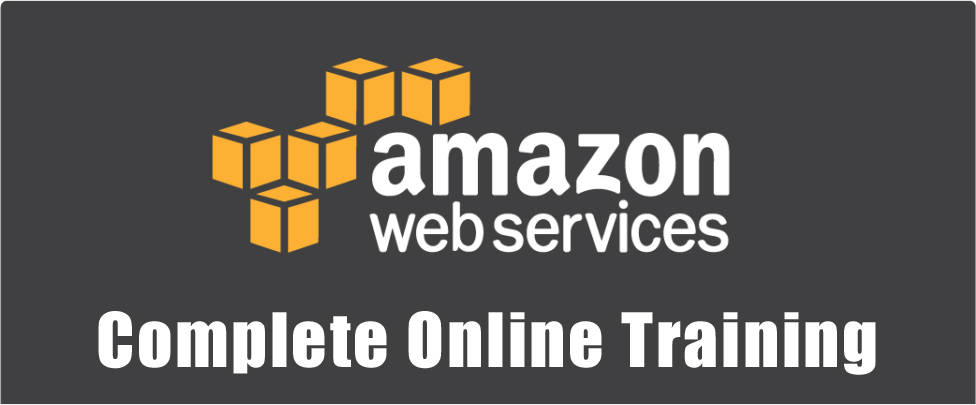Amazon Web Services Online Training
The Best AWS Training institute in Hyderabad.
Faculty: Mr Abhiram ( 10+ Years Experience )

Professional Online Training
Tech Marshals Academy is one of the Best AWS Online Training Institute in Hyderabad India. Amazon web services online training by Tech Marshals is designed to help you learn and master the subject with ease. AWS is today the most preferred web services used on the cloud computing platform. Services like Simple Storage, Elastic Compute Cloud, Virtual Private Cloud are used extensively by industries across verticals for data and application management and business process continuity and scalability. AWS programmers are in constant demand with the ever increasing mobility of the business to the cloud application platforms.
Enroll Now For Demo Session
AWS ONLINE COURSE CONTENT
Aetworking and Content Delivery
- Virtual Private Cloud (VPC)
- AWS Direct Connect
- Amazon CloudFront
- Route 53
Storage
- Simple Storage Service (S3)
- Glacier
Identity
- Identity Access and Management
- AWS Security Token Service
Compute
- Elastic Compute Cloud (EC2)
- Elastic Load Balancer
- EC2 Container Service
- Amazon Elastic Beanstalk
- Lambda
Database
- RDS
- Amazon Dynamo DB
- Amazon Elastic Cache
- RedShift
Messaging
- Simple Notification Service (SNS)
- Simple Queue Service (SQS)
Management Tools
- Cloud Watch
- Amazon Cloud Formation
- AWS Cloud Trail
- Billing
Developer Tools
- AWS Code Commit
- AWS Code Deploy
- AWS Code Pipleline
Analytics
- AWS Kinesis
- Amazon EMR (Elastic Map Reduce)
- Amazon Cloud Search
Application Services
- Amazon SWF (Simple Workflow Service)
- Elastic Transcoder
Amazon Web Services:
Account Basics:
- AWS Free tier
- Create an AWS Account
- Navigating AWS Console
Networking and Content Delivery
- Virtual Private Cloud (VPC)
- AWS Global Infrastructure
- VPC Basics
- Internet Gateways (IGW)
- Route Tables (RTs)
- Network Access Control Lists (NACLs)
- Subnets
- Availability Zones
- Introduction to VPC and AWS Networking
- Building A VPC From Scratch
- VPC Networking
- VPC Security
- Configuring a NAT Instance
- DB Subnet Groups
- Elastic IP Addresses and Elastic Network Interfaces
- Configure a Web Application In VPC
- Extending the VPC to On-Premise Networks
- VPC Peering
- Troubleshooting scenarios
- Network and Data Security
- Network Monitoring with Flow Logs
- Extending On-Premise Networks with VPN
- Using Directory Service to Connect Hybrid Architectures
- Security Zones
- Understanding AWS IP Subnet Reservations
- Hybrid Cloud AWS
- Overview
- AWS Hybrid Cloud Scenario
- Network Integration in to AWS VPC
- Best Practices
- AWS VPC Wizard Creation
- Creating an Open VPN Instance for Client Connections
- Extending Active Directory Into AWS
- Adding a domain controller to AWS
- AWS Direct
- Amazon CloudFront
- CloudFront Essentials
- Key Concepts and Overview
- Architecting Applications with CloudFront
- Dynamic Content with CloudFront
- CloudFront Reporting
- CloudFront Security
- Performance Considerations with CloudFront
- Streaming Media with CloudFront
- Forcing HTTPS to the origin
- Creating Multi-Region CloudFront Solution
- Route 53 Basics
- Using Route 53
- Route 53 and DNS Failover
- Latency Based Routing
- Weighted Routing Policies In Route 53
- Configuring DNS with Route 53
- Where we are in the reference architecture
- The role of DNS in a distributed cloud system
- Using Route 53 with ELB, CloudFront,
- How is failure handled?
- Configuring Route 53
- Route 53 Best Practices
Storage
- Simple Storage Service (S3)
- S3 Basics
- Buckets and objects
- Storage Classes
- Object Lifecycles
- Permissions
- Object Versioning
- S3 Essentials
- S3 Bucket/Object Versioning and Policies
- Website Hosting with S3
- AWS Command Line Interface
- Working with S3 using CLI
- Introduction to S3 Developer Requirements
- Creating a static hosting Website with S3
- Enabling CORS configuration
- S3 IAM & Bucket Policies
- Logging S3 API Calls
- S3 Encryption
- Python S3 Code Examples
- Glacier
- Overview
- Introduction to Glacier
- Creating a Glacier Vault
- Storing Archives in Glacier
- Understanding Glacier’s Retrieval Pricing
- Restoring Archives from Glacier
Identity
- Identity Access and Management
- What is IAM
- IAM initial Setup and Configuration
- IAM Users and Policies
- IAM Groups and Policies
- I AM Roles
- IAM Essentials
- IAM Best Practices for new accounts
- API Keys and Roles
- IAM Policies
- Logging IAM Events with cloud trail
- IAM Roles and API Credentials with the Python SDK: Boto3
- IAM Roles and Access Keys for Development
- Setting up an EC2 Instance with IAM Roles and the Python Boto3 SDK
- Configuring the Boto3 SDK With API Credentials
- AWS Security Token Service
- Security Token Service
Compute
- Elastic Compute Cloud (EC2)
- EC2 Basics
- Amazon Machine Images (AMIs)
- Instance types
- Elastic Block Store (EBS)
- Security Groups
- IP Addressing
- Launching and using an EC2 instance
- EC2 Essentials
- Understanding Reserved Instances
- Selecting and Building EC2 Instances
- Working with public and private IP Addresses
- Cloud-init Userdata and Metadata
- CloudWatch and EC2
- EC2 Placement Groups
- Serving Traffic to Private Web Servers
- Working with Elastic Block Storage
- Understanding AWS Storage Types
- Increasing IOPS Performance
- Configuring Optimized Instances
- EBS Volumes and Snapshots
- EBS Snapshots and Replication
- EBS Snapshots Characteristics
- Working with Snapshots in the AWS Management Console
- AWS Command Line Interface
- Working with EC2 using CLI
- EC2 Troubleshooting Scenarios
- Monitoring and Metrics
- Understanding AWS Instance types, Utilization and Performance
- EC2 Instance and System Status Checks
- Creating Cloud Watch Alarms
- Installing and Configuring Monitoring Scripts for EC2 Instances
- Dedicating an instance to monitoring
- Monitoring EBS for performance and availability
- High Availability and Fault Tolerant Tools with EC2
- Working with AMI’s
- ELB with High Availability Hands On
- Troubleshooting Connectivity Issues
- Applying Auto Scaling and ELB To Create High Availability and Fault Tolerance
- Auto Scaling
- Basics
- Using Auto Scaling
- Auto Scaling Troubleshooting scenarios
- Auto Scaling Features
- How Auto Scaling Works
- Configuring Auto Scaling
- Elastic Load Balancer
- ELB Basics
- Creating an ELB
- Monitoring ELB for performance and availability
- ELB Troubleshooting scenarios
- Maintaining Session State on ELB applications
- EC2 Container Service
- Introduction
- What is a Container?
- Container Architecture
- Amazon Web Services – EC2 Container Service Introduction
- Setup and Configuration
- Creating an ECS User and Group
- Logging Into the Console: Aliases and IAM Accounts
- Creating Instance Key Pairs
- Creating a Cluster Virtual Private Cloud
- Security Groups and ECS Clusters
- Install and Configure the AWS CLI
- AWS CLI – Installing Docker for ECS Container Management
- Components and Usage
- AWS ECS – Using the Wizard for Sample Cluster Creation
- AWS ECS – Exploring the Sample Container Cluster
- Customizing the ECS Cluster
- Cluster Security Group Customization
- Container Instance Scaling
- Elastic Load Balancer – Container Registration and Configuration
- Container Repositories: The DockerHub
- Containers: Docker Basics
- ECS: Creating a Custom Container
- ECS: Creating a Custom Task Definition for our Containers
- ECS: Running Multiple Container Types in the Cluster
- Troubleshooting
- Performance Metrics
- Service Limits
- Introduction
- Amazon Elastic Beanstalk
- Elastic Beanstalk Essentials
- Getting Started with Elastic Beanstalk
- Setup and Configuration
- Installing the AWS CLI and EB CLI Tools
- Elastic Beanstalk Accounts and Groups
- EB CLI – Configuration
- Components and Usage
- Elastic Beanstalk: Using the Wizard
- Elastic Beanstalk: Walking Through the Environment
- Elastic Beanstalk: Command Line Basics
- Creating and Deploying a Custom Docker Container in EB
- Updating an Environment with a New Build
- Lambda
- AWS Lambda Core Concepts
- Lambda Essentials
- Event-driven Fundamentals
- Understanding Lambda Limits
- Starting with Lambda Functions
- Considerations and Limitations for Lambda Functions
- Lambda Prerequisites Creating and Configuring Your First Lambda Function
- Monitoring and Alerting for Your First Lambda Function
- AWS Lambda Core Concepts
Compute
- RDS
- Overview
- Essentials
- Working with RDS
- Subnet Groups
- Security Options
- RDS Security Groups and Connecting to RDS from EC2
- Monitoring RDS for performance and availability
- MySQL and Maria DB on RDS
- Oracle DB on RDS
- MSSQL on RDS
- Amazon Dynamo DB
- Getting Started with Dynamo DB
- Local and Global Secondary Indexes
- Dynamo DB overview and Limits
- Provisioned Throughput
- Query vs Scan API Calls
- Conditional Writes And Atomic Counters
- Connect to Dynamo DB from APP using Identity Providers
- Dynamo DB Multi-Region Replication
- AWS Data Pipeline
- Introduction To Data Pipeline
- Using Data Pipeline To Replicate DynamoDB Data Across Regions
- Using Data Pipeline to Copy DynamoDB Data to S3
- Amazon Elastic Cache
- Overview
- MemCache
- Redis
- Monitoring Elastic Cache For Performance and Availability
- RedShift
- Overview
Messaging
- Simple Notification Service (SNS)
- SNS Basics
- Using SNS
- NS Essentials and Usage
- Managing Access to SNS Resources
- Using SNS with SQS and CLI
- SNS Message Data
- Mobile Apps: Mobile Push with SNS
- Simple Queue Service (SQS)
- SQS Essentials
- Using SQS to Build Decoupled architectures
- SQS API Developer Requirements
- Message Priority
- Batch Processing Job Observer
Management Tools
- Cloud Watch
- Cloud Watch
- Cloud Watch Basics
- Introducing CloudWatch
- Introducing Globomantics
- CloudWatch Architecture
- CloudWatch Core Concepts
- Basic Service Monitoring with the CloudWatch Dashboard and CLI
- CloudWatch Dashboard Introduction
- CloudWatch Dashboard Overview
- CloudWatch CLI Introduction
- Basic Interaction with CloudWatch Using the AWSCLI
- Creating CloudWatch Alarms
- CloudWatch Alarms Overview
- Creating a CloudWatch Alarm
- Monitoring a CloudWatch Alarm
- Creating Custom CloudWatch Alarms and Metrics
- Custom Metrics Review
- Create Custom Metrics
- Published Data with the Dashboard and CLI
- CloudWatch API
- Using CloudWatch with Outside Resources
- Centralizing Log Collection with the CloudWatch Agent
- Amazon CloudFormation
- CloudFormation Essentials
- Building an S3 Bucket with CloudFormation
- Deploying EC2 Resources
- Deploying a website S3 Bucket Configuration
- AWS Cloud Trail
- Overview
- Configuring Cloud Trail in Console
- Monitoring Cloud Trail Events with Cloud Watch
- Billing
- AWS Billing and linking AWS Accounts
- AWS Billing Dimensions and metrics for Cloud Watch
- Cost Optimizing
- Using the AWS Price List API and Cost Explorer.
- For Latest Course Content WhatsApp or Mail Us.



